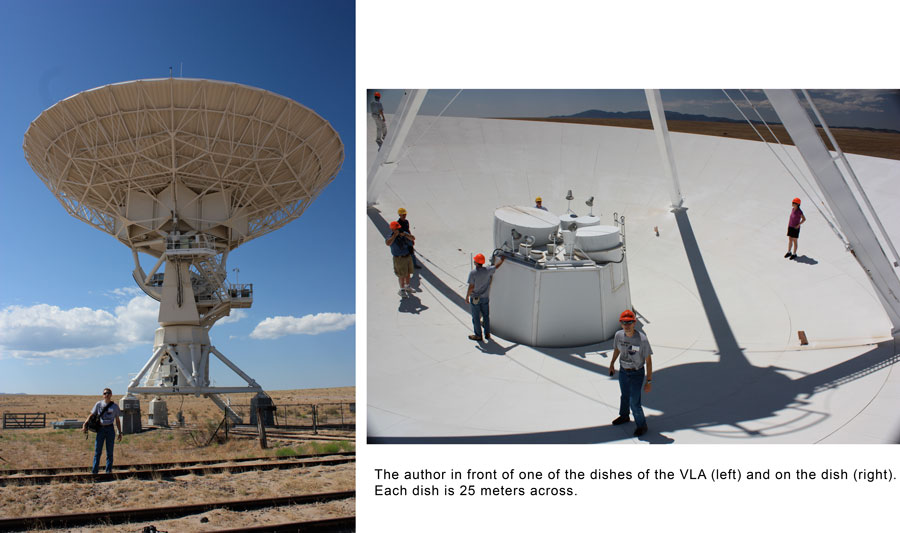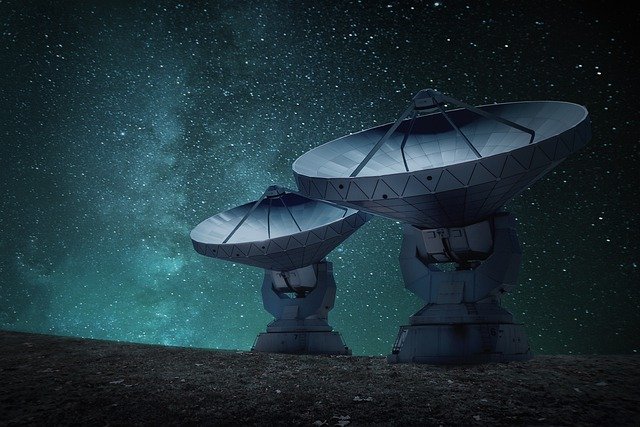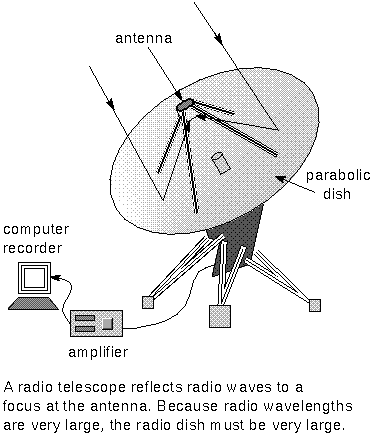Explain How a Radio Telescope Differs From an Optical Telescope
Radio telescopes are used to study much longer wavelengths than visible light. Radio telescopes pick up radio waves whereas Optical telescopes use light waves so Radio telescopes show us things we cannot see with the naked eye or with optical telescopes.
Because radio wavelengths are far longer than optical wavelengths radio telescopes are significantly bigger than optical telescopes.

. But if the telescope were directed at the sky while the eyepiece sits at the end of the tube youd have to. The optical components consist of glass lenses mirrors or both. Optical telescopes is an instrument which collects visible light that bring it to a focus amplify it and it is used for the analysis by various instruments.
The OTA is the metal tube that comes to mind when you think of telescopes. Telescope Comparisons Refracting vs. Telescopes provide a means to explore the universe.
To get started in this context we are only discussing the OTA Optical Telescope AssemblyAssemblies. That means an array can demand a lot of land space to be operational. In order to collect enough radio photons to detect a signal the radio dishes must be very large.
Refracting telescopes use lenses to bend light as it passes throught them. Because radio waves have longer wavelengths than optical light waves they have less energy than optical light waves. A telescope that is optical is a telescope that gathers and focuses light very keenly.
- optical telescopes can capture all wavelengths of visible light at the same time - radio detectors can only register a narrow band of wavelengths at any one time. So when we talk about optical images were talking about light that is a few hundred nanometers in size. But the difference comes and radio wavelengths are really really big.
Radio wavelengths are immune to dust unlike visible waves. There are plenty of different telescopes that have been invented. As such it works similarly to a pirates spyglass because you could place an eyepiece in front of the light.
Non-optical telescopes are telescopes that are used by viewers to look at other electromagnetic spectrums other than the visible light. And that is significantly smaller than the size of a hair. Learn about different types of telescopes including radio x-ray gamma ray reflecting and refracting telescopes.
One of these has been built at the US National Radio Astronomy Observatory in West Virginia. A radio telescope uses a large metal dish or wire mesh usually parabolic-shaped to reflect the radio waves to an antenna above the dish. The two main differences between telescopes is that they are either optical or non-optical.
The advantage of a radio telescope over optical telescopes is that they a. These are limited by the size of the lenses and therefore tend to be much smaller than reflectors. We end the great design debate.
The longer wavelengths means that the radio waves have lower energy than optical light waves. The optical telescopes studies the light wave portion of the spectrum arriving from distant objects whereas radio telescopes are used in radio astronomy for studying the radio frequency portion of the electromagnetic spectrum emitted by astronomical objects. Explain how a radio telescope differs from an optical telescope.
Radio telescopes are actually composed of several dozen large precise antennas instead of a single telescope option. Radio telescopes is an instrument which is used to detect the radio emissions from the sky. This is necessary because the radio signals they detect are very low in energy.
Just as optical telescopes collect visible light bring it to a focus amplify it and make it available for analysis by various instruments so do radio telescopes collect weak radio light waves bring it to a focus amplify it and make it available for analysis. A radio telescope looks much different than an optical telescope and it collects different par. The radio telescope is a type of directional radio antenna which is used in radio astronomy.
Refractor telescopes are characterized by a front-facing curved lens which works by using the optical tube to bend and concentrate light on a specific point. Radio astronomy is a young field compared with visible-light astronomy but it has experienced tremendous growth in recent decades. Explain how a radio telescope differs from an optical telescope.
Like the reflective scope the refraction scope uses visible light that we see with our eyes. The worlds largest radio reflectors that can be pointed to any direction in the sky have apertures of 100 meters. An optical telescope is a telescope that collects only visible light.
It is mainly from the parts that are visible of the electromagnetic spectrum. It is an instrument used to detect radio emissions from the sky whether from natural celestial objects or from artificial satellitesSimilar types of antennas are used for collecting data from satellites and in the research of the universe. And with a radio telescope were talking about wavelengths that are measured.
400 nanometers 800 nanometers somewhere in there. Even the Hubble Space Telescopes resolution is greatly enhanced by adaptive optics. A radio telescope looks much different than an optical telescope and it collects different parts of the electromagnetic spectrum.
Radio telescopes are much larger than optical telescopes because radio wavelengths are much longer than optical wavelengths. We use radio telescopes to study naturally occurring radio light from stars galaxies black holes and other astronomical objects. Often radio telescopes use a dish to focus the radio waves onto the receiver.
It houses the optical components needed to see an image with magnification. What is the main difference between optical telescopes and radio telescopes. That is to create a magnified image for the direct view or to make a photograph or.
Earth Based Telescopes Radio Telescopes Pass My Exams Easy Exam Revision Notes For Gsce Physics

Radio Telescope Vs Optical Telescope The Differences Between Them Scope The Galaxy

No comments for "Explain How a Radio Telescope Differs From an Optical Telescope"
Post a Comment